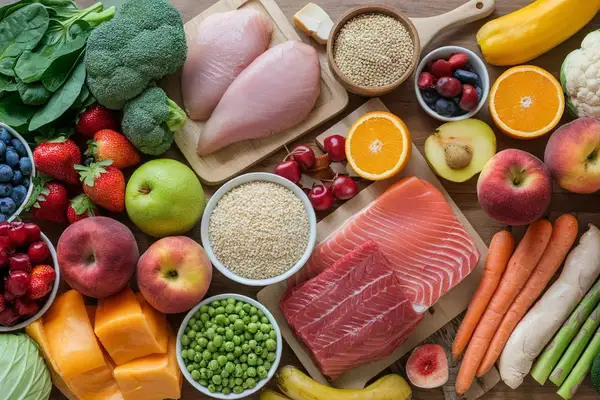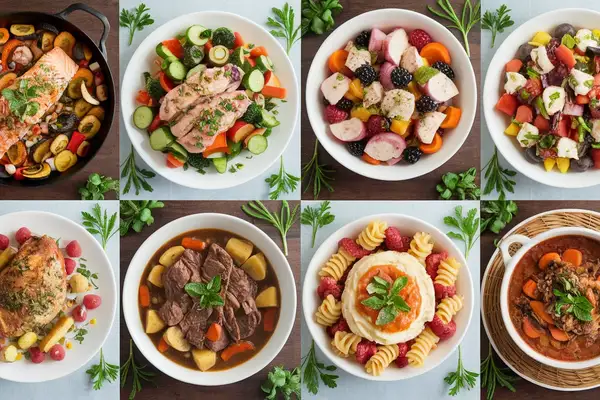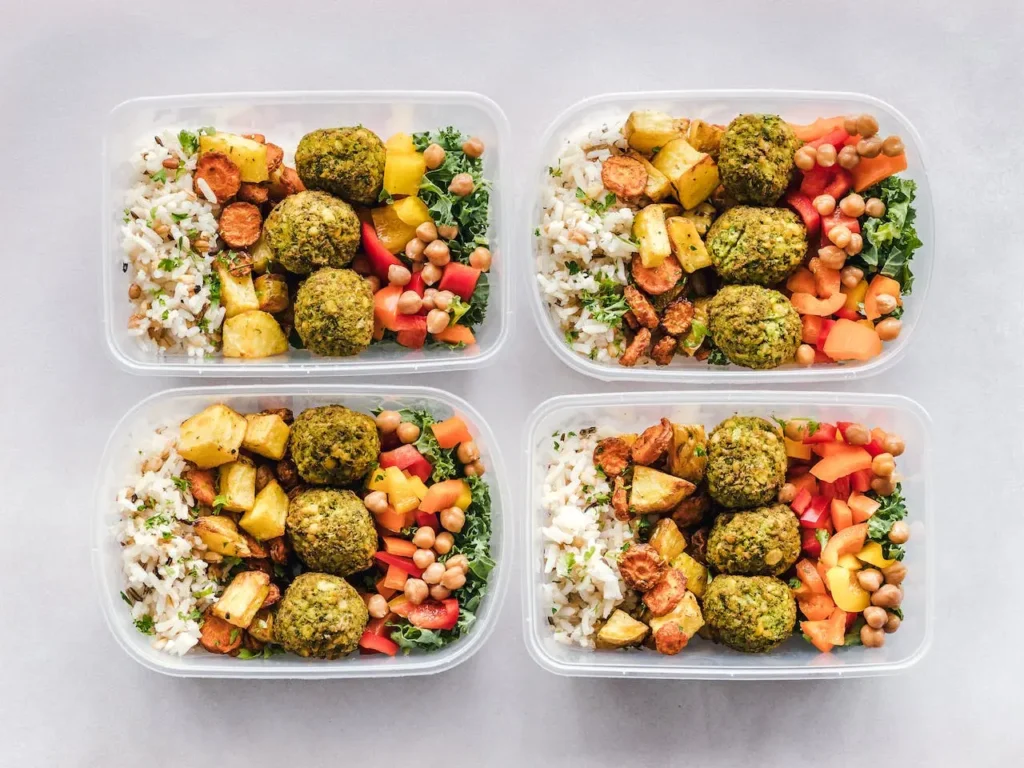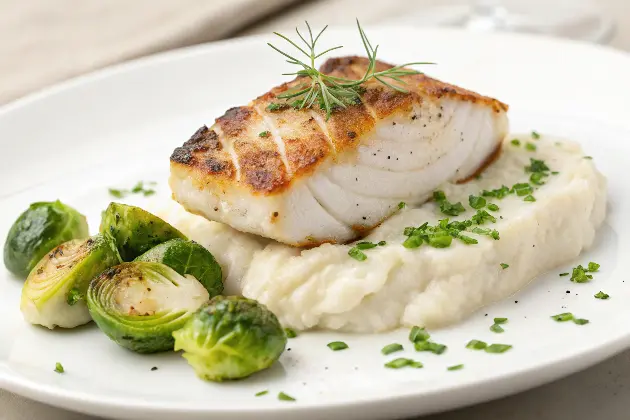7-Day Low Oxalate Diet Plan | Good For Kidney Stones
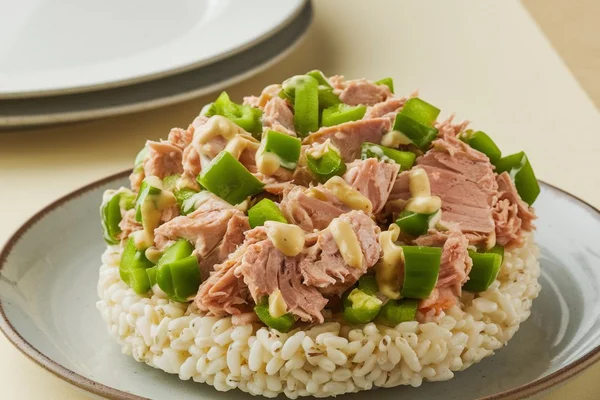
What Is a Low Oxalate Diet?
This post may contain affiliate links, meaning I may earn a commission if you make a purchase, at no extra cost to you. I only recommend products I trust. Thank you for your support.
A low oxalate diet restricts foods that are high in oxalates, which are naturally occurring compounds found in many plant-based foods.
For people prone to kidney stones, especially calcium oxalate stones, reducing oxalate intake can help prevent future stone formation.
While most foods contain some oxalates, a low oxalate diet for kidney stones limits oxalates to around 40-50 milligrams per day.
In this article, we’ll walk you through a 7-day low oxalate diet plan, and we’ll highlight low oxalate foods you can incorporate into your meals.
Low Oxalate Foods List
With these low oxalate foods, you’ll have plenty of variety to create satisfying, low oxalate meals!
Low Oxalate Vegetables
- Lettuce (all types)
- Cauliflower
- Cabbage
- Brussel Sprouts
- Peas
- Mushrooms
- Onions
- Garlic
- Cucumber
- Zucchini
- Bell peppers
- Radish
- Broccoli
- Celery (raw)
- Alfalfa Sprouts
- Mung Beans
- Chives
- Sauerkraut
- Yellow Squash
Low Oxalate Fruits
- Dried apples
- Bananas
- Cherries
- Pineapple
- Watermelon
- Blueberries
- Blackberries
- Mangoes
- Dried Apricots
Low Oxalate Proteins
- Eggs
- Chicken
- Turkey
- Beef
- Fish (most types)
- Pork
Low Oxalate Grains
- White rice, cooked
- Corn flour
- Oat bran
- Macaroni & Cheese
- Barley malt flour
Low Oxalate Nuts and Seeds
- Flaxseeds
- Sunflower seeds
- Pumpkin seeds
- Macadamia nuts
Low Oxalate Dairy Products
- Milk (all types)
- Goat cheese
- Sour cream
- Cream cheese
- Plain yogurt
- Coffee creamer
- Cheddar cheese
- Butter
- Cottage cheese
- Mozzarella cheese
- Homemade cream sauce
Low Oxalate Herbs and Spices
- Cayenne powder
- Dried basil
- Dried thyme
- Red pepper flakes
- Chamomile
- White pepper
- Ginger
- Peppermint
- Rooibos
Low Oxalate Fats and Oils
- Olive oil
- Coconut oil
- Butter
High Oxalate Foods to Avoid
Avoiding these foods or reducing their consumption can help manage oxalate levels in your diet.
High Oxalate Vegetables
- Spinach
- Beet greens
- Swiss chard
- Rhubarb
- Beets
- Sweet potatoes
- Okra
- Kale (especially mature kale)
- Leeks
- Parsley (large amounts)
- Collard greens
- Turnip greens
High Oxalate Fruits
- Starfruit
- Figs
- Raspberries
- Kiwi
- Oranges
- Grapefruit
- Tangerines
- Plums
- Pomegranate
High Oxalate Nuts and Seeds
- Almonds
- Cashews
- Pistachios
- Pecans
- Peanuts
- Sesame seeds
High Oxalate Grains and Cereals
- Wheat bran
- Whole wheat products
- Brown rice
- Buckwheat
- Quinoa (some sources consider it moderately high in oxalates)
- Oatmeal (moderate to high in some sources)
High Oxalate Legumes and Beans
- Soybeans (including tofu and soy products)
- Navy beans
- Pinto beans
- Lima beans
- Black beans
- Fava beans
- Green beans
High Oxalate Beverages
- Tea (especially black tea)
- Cocoa and hot chocolate
- Instant coffee (higher oxalate content than brewed coffee)
- Cola
High Oxalate Herbs and Spices
- Cinnamon
- Cloves
- Turmeric (in large quantities)
- Cumin
- Coriander
- Curry powder
High Oxalate Miscellaneous Foods
- Chocolate (including dark chocolate and cocoa powder)
- french fries (especially skins)
- Almond butter
- Peanut butter
- Potato chips
7-Day Low Oxalate Diet Plan for Kidney Stones
This low oxalate diet plan features low oxalate foods and easy low oxalate meals, that help reduce kidney stone risk and promote healthy digestion.
This 7-day low oxalate meal plan is designed with variety in mind, ensuring you get a wide range of nutrients while keeping your oxalate intake low.
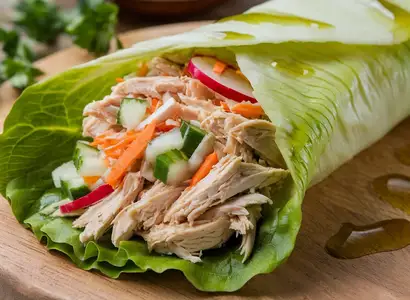
Day 1
Breakfast:
- Creamy Rice Porridge: Mix cooked white rice and coconut milk. Top with blackberries and flaxseeds. Refrigerate overnight. Cooked white rice (1/2 cup), coconut milk (1 cup), blackberries (1/2 cup), flaxseeds (1 tbsp)
Lunch:
- Chicken Salad Wrap with Cucumber and Lettuce: Shred chicken and mix with diced cucumber, boiled carrots, and radishes. Wrap in large lettuce leaves and drizzle with olive oil. Shredded chicken (1/2 cup), cucumber (1/2 cup), carrots (1/4 cup), radishes (1/4 cup), lettuce leaves, olive oil (1 tsp)
Dinner:
- Grilled Salmon with Sautéed Cabbage and White Rice: Grill the salmon until cooked through. Steam green beans and serve alongside cooked white rice. Salmon fillet, cabbage (1/2), cooked white rice (1/2 cup)
Snacks:
- Pear Slices with Cottage Cheese: Slice a pear and serve with a small bowl of cottage cheese for dipping. Pear (sliced), cottage cheese (1/4 cup)
- Cucumber Slices with Yogurt Dip: Cucumber Slices with Hummus: Serve cucumber slices with hummus for a crunchy snack. Cucumber slices (1/2 cup), hummus (2 tbsp)

Day 2
Breakfast:
- Banana Coconut Flaxseed Pudding: Combine chia seeds with coconut milk and refrigerate overnight. Top with sliced banana in the morning. Flaxseeds (2 tbsp), coconut milk (1 cup), banana (1/2, sliced)
Lunch:
- Cabbage & Kohlrabi Salad: Shred cabbage and kohlrabi, and toss with olive oil, lemon juice, and salt for a crunchy salad. Cabbage (1 cup), kohlrabi (1/2 cup, shredded), olive oil (1 tsp), lemon juice (1 tsp)
Dinner:
- Baked Cod with Steamed Zucchini and Mashed Butternut Squash: Bake cod fillets with olive oil, salt, and pepper. Steam zucchini and serve alongside mashed butternut squash. Cod fillets (1), zucchini (1 cup), mashed butternut squash (1/2 cup)
Snacks:
- Apple Slices with Sunflower Seed Butter: Slice an apple and serve with a spoonful of almond butter. Apple (1), almond butter (2 tbsp)
- Zucchini Slices with Plain Yogurt Dip: Serve sliced zucchini with hummus for dipping. (1/2 cup), plain yogurt (2 tbsp), olive oil (1 tsp), lemon juice (1 tsp).
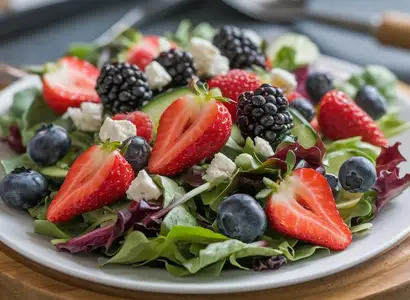
Day 3
Breakfast:
- Oatmeal with Blueberries and Flaxseeds: Cook oats in coconut milk and stir in fresh blueberries. Top with flaxseeds for added texture and nutrition. Oats (1/2 cup), coconut milk (1 cup), blueberries (1/2 cup), flaxseeds (1 tbsp)
Lunch:
- Spring Mix Strawberry Summer Salad: Toss spring mix with sliced strawberries, cucumber, and a sprinkle of feta. Dress with olive oil and balsamic vinegar. Spring mix (1 cup), strawberries (1/2 cup, sliced), cucumber (1/4 cup, diced), feta (1 tbsp), olive oil (1 tsp)
Dinner:
- Baked Turkey Breast with Steamed Carrots and Mashed Cauliflower: Bake turkey breasts with olive oil, salt, and pepper, and serve alongside steamed carrots and mashed cauliflower. Turkey breasts (4 oz), carrots (1/2 cup), mashed cauliflower (1/2 cup)
Snacks:
- Celery Sticks with Cream Cheese: Slice celery into sticks and dip into cream cheese for a quick and satisfying snack. Celery (1/2 cup), cream cheese (2 tbsp)
- French Cherries with Cottage Cheese: Enjoy fresh French cherries paired with cottage cheese for a sweet and creamy snack. French cherries (1/4 cup), cottage cheese (1/4 cup)
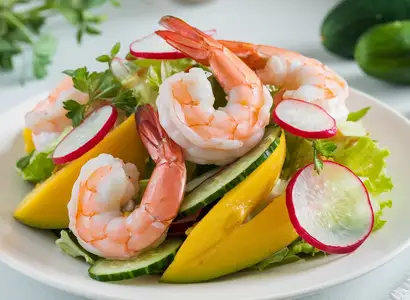
Day 4
Breakfast:
- Egg and Veggie Muffins: Bake eggs with diced bell peppers and zucchini in a muffin tin. Eggs (2), bell pepper (1/4 cup, diced), zucchini (1/4 cup, diced)
Lunch:
- Shrimp, Mango & Cucumber, and Radish Salad: Combine shrimp, diced mango, cucumber, and radish for a colorful salad. Shrimp (1/2 cup, cooked), mango (1/4 cup, diced), cucumber (1/4 cup, diced), radish (1/4 cup, sliced)
Dinner:
- Chicken Skewers with Cauliflower Cream Sauce: Grill chicken breast cubes and serve with a creamy cauliflower sauce on the side. Chicken breast (4 oz, cubed), cauliflower (1/2 cup, blended into a creamy sauce)
- Turkey Meatloaf with Steamed Peas and Mashed Cauliflower: Make a turkey meatloaf and pair with steamed peas and mashed cauliflower for a wholesome dinner. Turkey (4 oz), green peas (1/2 cup), cauliflower (1/2 cup)
Snacks:
- Iced Green Tea Lemonade: Brew green tea and mix with fresh lemon juice over ice for a refreshing drink. Green tea (1 cup, brewed), lemon juice (1/2 lemon)
- Sugar-Free Popsicles with Apple Juice: Enjoy a cool, sweet treat with sugar-free popsicles and a refreshing glass of apple juice. Sugar-free popsicles (1), apple juice (1/2 cup)
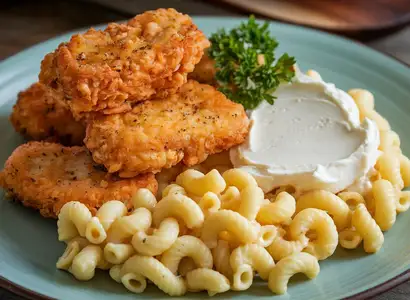
Day 5
Breakfast:
- Scrambled Eggs with Zucchini and Goat Cheese: Scramble eggs and add sautéed zucchini and crumbled feta cheese for a savory breakfast. Eggs (2), zucchini (1/4 cup, diced), goat cheese (1 tbsp)
Lunch:
- Chicken Nuggets with Boiled Macaroni & Cream Cheese: Bake chicken nuggets and serve with boiled macaroni stirred in with cream cheese. Chicken nuggets (4 pieces), boiled macaroni (1/2 cup), cream cheese (1 tbsp)
Dinner:
- Turkey Meatballs with Zucchini Noodles: Bake turkey meatballs and serve with sautéed zucchini noodles for a healthy, low-oxalate meal. Turkey meatballs (4 pieces), zucchini noodles (1/2 cup)
Snacks:
- Rice Cake with Cream Cheese: Spread cream cheese on a rice cake for a simple, satisfying snack. Rice cake (1), cream cheese (1 tbsp)
- Apple Juice Snack: Savor a crisp and refreshing glass of apple juice for a sweet, hydrating snack. Apple juice (1/2 cup)
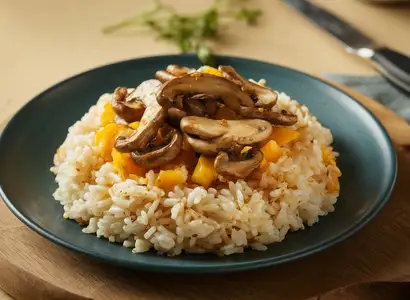
Day 6
Breakfast:
- Plain Yogurt with Blueberries: Top Plain yogurt with fresh blueberries for a protein-rich breakfast. Yogurt (1/2 cup), blueberries (1/4 cup)
Lunch:
- Chicken Noodle Soup with Green Peas: Heat chicken noodle soup and stir in green peas for added flavor and texture. Chicken noodle soup (1 cup), green peas (1/4 cup)
Dinner:
- Shiitake Mushrooms with Yellow Squash and White Rice: Sauté shiitake mushrooms and yellow squash, and serve with white rice for a savory, low-oxalate meal. Shiitake mushrooms (1/2 cup, sliced), yellow squash (1/2 cup, diced), cooked white rice (1/2 cup)
Snacks:
- Cucumber Slices with Hummus: Serve cucumber slices with hummus for a crunchy snack.
Cucumber slices (1/2 cup), hummus (2 tbsp) - Watermelon: Enjoy a refreshing and hydrating serving of watermelon for a light and sweet snack. Watermelon (1/2 cup, cubed)
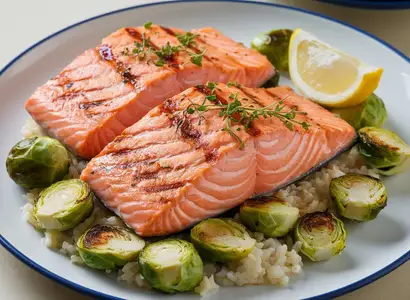
Day 7
Breakfast:
- Scrambled Egg Whites with Bell Peppers and Mushrooms: Scramble egg whites and cook with diced bell peppers and mushrooms in olive oil. Egg whites (3), bell peppers (1/4 cup), mushrooms (1/4 cup), olive oil (1 tsp)
Lunch:
- Chicken Stir-Fry with Bell Peppers and Zucchini: Stir-fry chicken breast with bell peppers and zucchini for a quick and nutritious dinner. Chicken breast (4 oz), bell pepper (1/4 cup), zucchini (1/2 cup)
Dinner:
- Grilled Salmon with Roasted Brussels Sprouts and Rice: Grill salmon fillets and pair with roasted Brussels sprouts and a side of white rice for a balanced meal. Salmon (4 oz), Brussels sprouts (1/2 cup), white rice (1/2 cup)
Snacks:
- Pear Slices with Cottage Cheese: Slice a pear and serve with cottage cheese for a refreshing snack. Pear (1), cottage cheese (1/4 cup)
- Zucchini Chips with Cream Cheese Dip: Slice zucchini thinly and bake into chips, then dip into cream cheese for a crunchy snack. Zucchini (1/2 cup), cream cheese (2 tbsp)
Why Follow a Low Oxalate Diet?
Here are the key points as to why follow a low oxalate diet:
- Prevents Kidney Stones: The most common reason for following a low oxalate diet is to prevent the formation of calcium oxalate kidney stones, by reducing oxalate levels that can crystallize with calcium in the kidneys.
- Beneficial for Those Prone to Kidney Stones: Individuals with a history of kidney stones or a genetic predisposition to developing them can benefit from limiting oxalate intake.
- Supports Digestive Health: Some people with gastrointestinal issues, such as irritable bowel syndrome (IBS) or inflammatory bowel disease (IBD), may find relief from symptoms by following a low oxalate diet, which can reduce digestive irritation.
- Essential for Hyperoxaluria Patients: For those with primary hyperoxaluria, a rare genetic disorder that affects oxalate metabolism, a low oxalate diet is crucial to prevent harmful oxalate buildup in the body.
- Reduces Oxalate Absorption Issues: People with malabsorption issues, like those caused by gastric bypass surgery or Crohn’s disease, may benefit from a low oxalate diet as their bodies may not process oxalates efficiently.
- Helps Maintain Balanced Nutrition: By managing oxalate intake carefully, individuals can prevent oxalate-related health issues without compromising on essential nutrients.
Tips for Success on a Low Oxalate Diet
- Stay Hydrated: Drinking plenty of water can help flush oxalates from your system.
- Cook Smart: Boiling high-oxalate vegetables and discarding the water can reduce their oxalate content.
- Balance Your Nutrients: Ensure you’re getting enough calcium, as it can bind to oxalates in the digestive tract.
- Read Labels: Some processed foods may contain hidden high oxalate ingredients.
- Don’t Overdo It: Even low oxalate foods can add up, so practice portion control.
Conclusion
Embarking on a low oxalate diet doesn’t mean you have to sacrifice flavor or variety in your meals. With this 7-day low oxalate meal plan and the meals provided, you’re well-equipped to kickstart your low oxalate diet safely.
Remember, everyone’s nutritional needs are different, so it’s always best to consult with a healthcare professional or registered dietitian before making significant changes to your diet.
Whether you’re trying to prevent kidney stones or simply want to adopt a healthier lifestyle, this low oxalate diet plan is a great way to get started.
Stay consistent with your low oxalate recipes and low oxalate meals, and with time, you’ll find that a low oxalate diet can be both manageable and enjoyable.
- Best diet to lower cholesterol
- 20:4 Warrior diet intermittent fasting
- Insulin resistance diet plan
- 7-day apple cider vinegar diet
- 7-day meal plan for bone health
- Gallbladder diet meal plan
- Renal diet meal plan
- Healthy meals for arthritis
- Iron-rich recipes for anemia
- Carnivore diet plan
- No sugar diet plan
- 7-day Mediterranean diet plan
- Type 2 diabetics menu plan
- Low-carb keto diet plan
- Delicious whole foods dinner recipes
- How does the cabbage soup diet work?
- What to eat on the OMAD diet?
- 21 day cortisol belly reducing diet plan
- Healthy Blue Zone meals
Frequently Asked Questions
Are eggs high in oxalates?
No, eggs are not high in oxalates. Eggs contain little to no oxalates and can be safely included in a low oxalate diet.
How can I lower my oxalate levels?
You can lower your oxalate levels by following a low oxalate diet, staying well-hydrated, cooking high oxalate foods to reduce their oxalate content, and ensuring adequate calcium intake to help bind oxalates in the digestive tract.
Are bananas high in oxalates?
No, bananas are not high in oxalates. Bananas contain 0–9.9 milligrams of oxalates per 100 grams and are considered a low oxalate fruit that can be enjoyed as part of a low oxalate diet.
Is okra high in oxalates?
Yes, okra is high in oxalates. Just half a cup of okra contains 57 milligrams of oxalates, which is considered significant for those monitoring oxalate intake.
What vitamins reduce oxalates?
While no vitamins directly reduce oxalates, maintaining adequate levels of vitamin B6 may help prevent oxalate buildup.
Additionally, vitamin C supplements in high doses may increase oxalate production, so it’s best to get vitamin C from low oxalate food sources.
Do oxalates damage kidneys?
Yes, high oxalate levels can contribute to the formation of kidney stones, especially calcium oxalate stones. This can damage the kidneys over time if not properly managed.
